Your cart is currently empty!
Top 10 Valuable and Delicious Wild Mushrooms
Wild mushrooms have an innate natural flavor and umami, and have high nutritional value, so they are becoming more and more popular among diners. Let’s take a look at the members of the wild mushroom family.

Matsutake mushrooms
Known as the “king of mushrooms”, it is known for its unique rich aroma and nutritional value, especially the matsutake mushroom grown in the Shangri-La region of Yunnan Province. According to the different processing and preservation methods of matsutake mushrooms on the market, they can be divided into three types: fresh, frozen and dried:
Fresh matsutake mushrooms:
Season: July to mid-September every year.
Best cooking methods: roasting, stewing, stir-frying, stir-frying, frying.
Other ways to eat: raw, cold, sashimi, “surfing” (a cooking method in which ingredients are quickly blanched in a hot broth).
Features: Fresh matsutake retains the most complete flavor and nutritional value, and has a delicious taste, making it the most popular edible form.
Frozen matsutake mushroom:
Best frozen product: Frozen matsutake mushroom, which can better preserve the original flavor and texture of matsutake mushroom.
Uses: Mainly used for stew, stir-frying, or making “surfing” dishes.
Features: Although frozen products may be slightly inferior to fresh products in taste and flavor, freezing technology can minimize the loss of quality and facilitate long-term storage.
Dried matsutake mushrooms:
Uses: Mainly suitable for stewing soups.
Characteristics: Dried matsutake mushrooms are dehydrated for long-term storage and transportation, but due to the loss of moisture, their flavor and texture may change, and they are generally not suitable for cooking methods that need to maintain the original flavor of the ingredients.
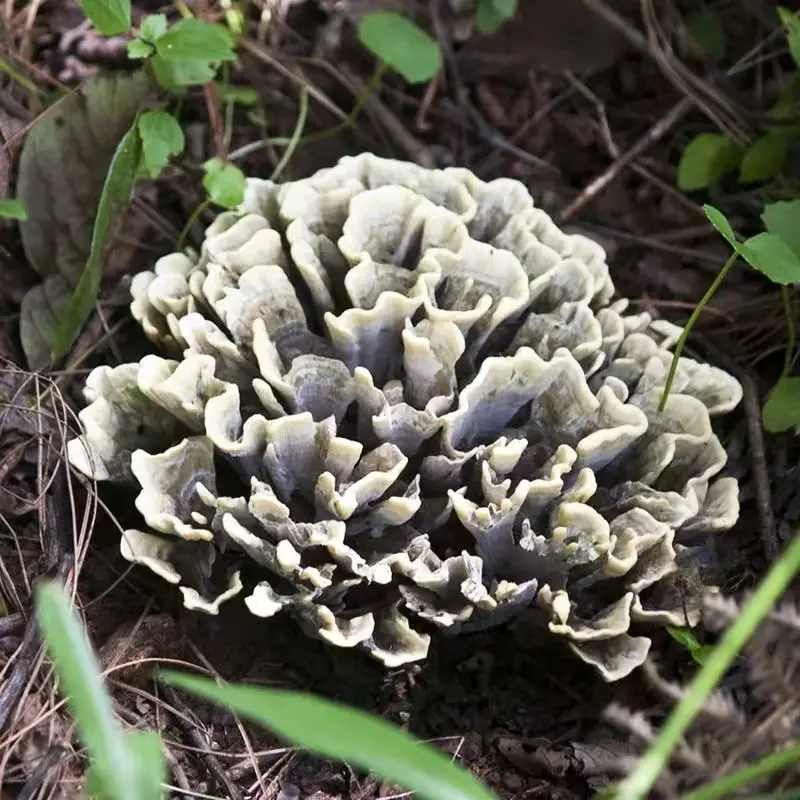
Dry bacillus
Known for their unique aroma and taste, dried mushrooms are very rare and expensive, and cannot be cultivated artificially at present. Dried mushrooms are not only delicious, but also have certain nutritional value, containing protein, fat, carbohydrates, vitamins, minerals and other nutrients, with antioxidant, anti-aging, improve immunity and other effects. However, it should be noted that dry mushrooms should not be eaten with river crabs, which may cause stone symptoms. In addition, people with allergy to Bacillus cangana and patients with intractable skin itching should avoid it.
When cleaning dry bacteria, it is necessary to carefully remove sediment and impurities, which can be washed with flour water and then rinsed with clean water. Dried mushrooms need to be thoroughly washed before consumption to remove pine needles and sediment that may be inclusions.
The preservation methods of dried bacteria include refrigeration and freezing. After the fresh dried bacteria are cleaned, they can be put into a plastic bag, stored in the freezer layer of the refrigerator, and taken out to thaw naturally before eating.
How to eat dried mushrooms:
Stir-fry dried mushrooms: Wash and tear the dried mushrooms into strips, stir-fry them quickly with garlic slices, green and red peppers, etc., and add ham or minced pork to increase the flavor.
Fried rice with dried mushrooms: Dried mushrooms are diced and stir-fried with rice, eggs, vegetables, etc., and the unique aroma of dried mushrooms can enhance the overall flavor of fried rice.
Oil-soaked dried mushrooms: After the dried mushrooms are washed, they are slowly fried in rapeseed oil until they are dried in water to make oily dried mushrooms, which can be used for mixing noodles or as a condiment for other dishes.
Dried mushroom stew: Dried mushrooms can be stewed with chicken or other meats, and their aroma can be incorporated into the soup to enhance the umami flavor of the soup.
Scrambled eggs with dried mushrooms: Diced dried mushrooms and stir-fried with eggs, it is simple and easy to make, suitable for home-cooked quick dishes.
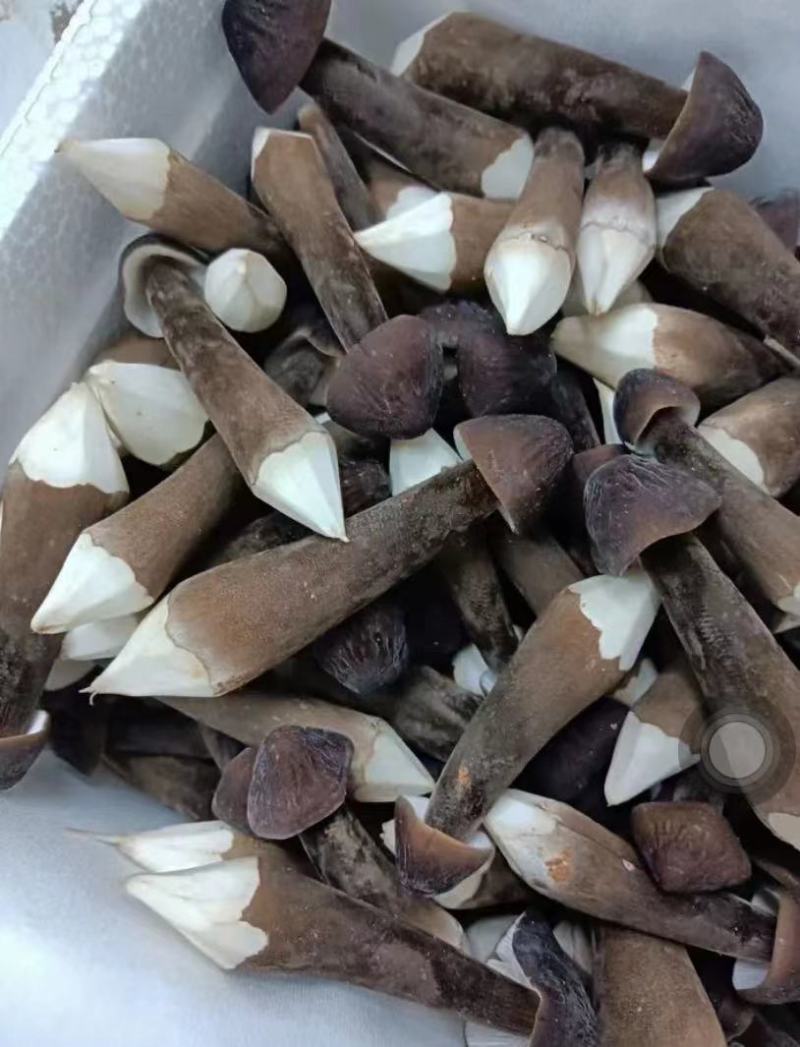
Chicken fir fungus
Chicken fir mushrooms are popular for their delicate meat and delicious taste, and are known as the “king of mushrooms”.
When cooking chicken fir mushrooms, care should be taken not to cook them at high temperatures for a long time, so as not to destroy their nutrients and taste. In addition, since the umami flavor of chicken fir mushrooms is very strong, there is usually no need to add MSG or other seasonings with strong flavors. Chicken fir mushroom is not only delicious, but also has a certain medicinal value, which can strengthen the spleen and stomach, nourish the deficiency and nourish the blood, and improve immunity. However, for those with fungal allergies, they should avoid eating chicken fir fungus.
Some recommended ways to eat chicken fir mushrooms:
Stir-fried chicken fir mushrooms: Wash and slice the fresh chicken fir mushrooms, stir-fry them quickly with garlic slices, green and red peppers, etc., and add an appropriate amount of salt and soy sauce to taste, which is simple and fast, and retains the original flavor of chicken fir mushrooms.
Chicken fir mushroom soup: Chicken fir mushrooms are simmered with chicken or other meats to add umami to the soup. Or cook the chicken fir mushrooms in a separate soup, and you can taste the rich mushroom soup with just a simple salt seasoning.
Stir-fried chicken fir mushrooms with shredded pork: Stir-fry the chicken fir mushrooms with shredded meat, add green onions, shredded ginger, minced garlic and other seasonings, and stir-fry until the chicken fir mushrooms are cooked thoroughly and delicious.
Fried chicken fir mushroom: Chicken fir mushrooms are torn into strips and slowly fried in oil until the water is dried to make fried chicken fir in oil, which can be used for mixed noodles or as a condiment for other dishes.
Chicken fir mushroom stew: Chicken fir mushrooms are stewed with pork or beef, the meat is delicious, and the chicken fir mushrooms are more delicious when they absorb the gravy.
Cold chicken fir mushrooms: Blanch the chicken fir mushrooms and let them cool, add minced garlic, coriander, chili oil and other seasonings and mix well to make a cold salad.
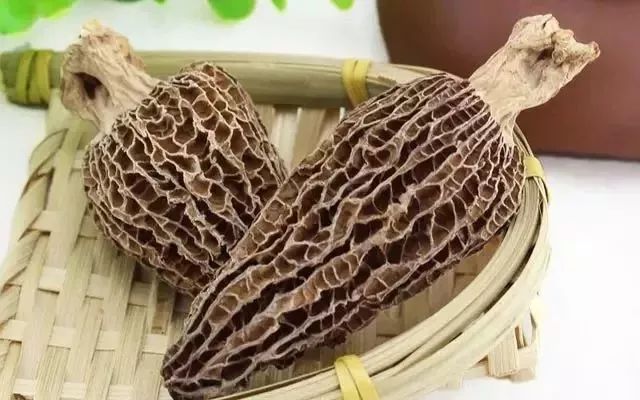
morel
Named for the uneven surface of the cap, which resembles a sheep’s tripe, morel mushroom is a rare edible mushroom species with a unique aroma and nutritional value.
When cooking morels, you should pay attention to the soaking process and use warm water at 40-50 °C to soak them to ensure the aroma and taste of morels. The water in which morels are soaked can be used in stews or stir-fries to add flavor. At the same time, because morel mushrooms are high-protein ingredients, they should be eaten in moderation for people with indigestion or weak constitution. Choose fresh, odor-free morels and make sure to wash them thoroughly to avoid ingesting contaminants.
Chicken stew with morels: Soak the morels in warm water and wash them, wash the chicken and cut them into pieces, and stew them with morels, salt, cooking wine, green onions, ginger, wolfberries, red dates, etc., until the chicken is cooked.
Stewed pork ribs with morel mushrooms: After the morel mushrooms are soaked, they are stewed with the pork ribs, ginger, green onion, wolfberry, and salt, and stewed until the ribs are deboned.
Stir-fried morels: Wash and slice the morels and quickly stir-fry them with green peppers, garlic, light soy sauce, salt, etc. until cooked.
Morel Chicken Soup: Morel mushrooms are simmered with chicken or other meats to make a nutritious soup.
Morel mushroom stew: Morel mushrooms are cooked with rice, sausage, bacon, etc., to make a unique flavor of stewed rice.
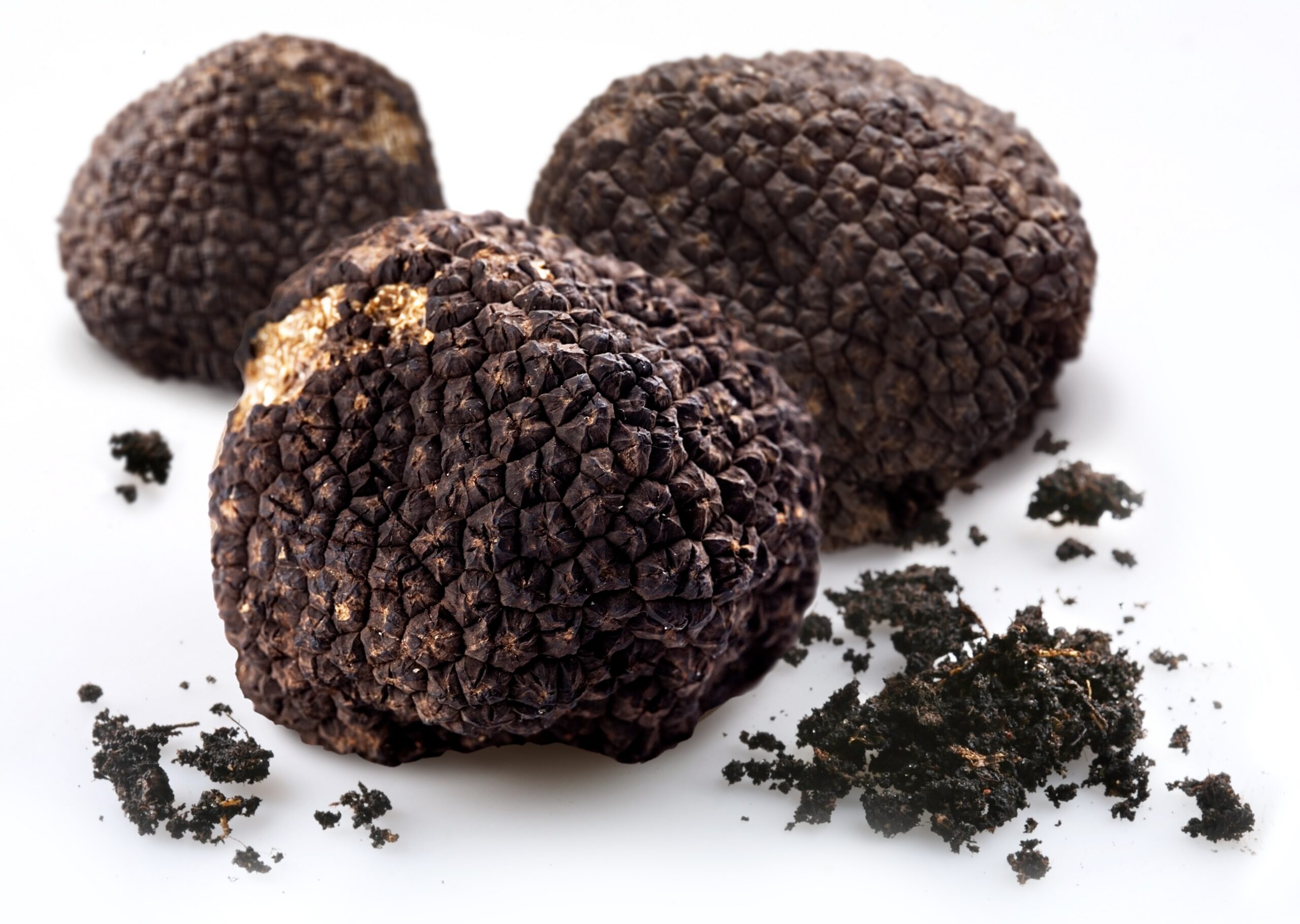
Truffles
Truffles are known as “black diamonds” and are especially precious in Europe, along with caviar and foie gras. When choosing truffles, one should consider their freshness and smell, fresh truffles have a firm texture and a strong aroma. When cleaning truffles, they should be handled gently so as not to spoil their flavor. Truffles can be stored by wrapping them in paper towels and storing them in the refrigerator, or by slicing them and drying them.
Common ways to consume it include:
Truffle Sashimi: Fresh black truffle slices, can be served with millet spicy or mustard dipped in water raw to enjoy its unique aroma.
Chicken stew with truffle: Black truffles are simmered with chicken, and the aroma of the truffles is able to penetrate the chicken and add flavor.
Steamed eggs with truffles: Steamed with chopped black truffles added to beaten eggs is simple and delicious.
Truffle soup: Once the black truffle is sliced, it can be simmered in chicken stock or other stock to make a rich truffle soup.
Truffle sauce: Black truffles are chopped and boiled with seasonings such as olive oil to make a sauce that can be used for bibimbap, bibimbap, or as a condiment for other dishes.
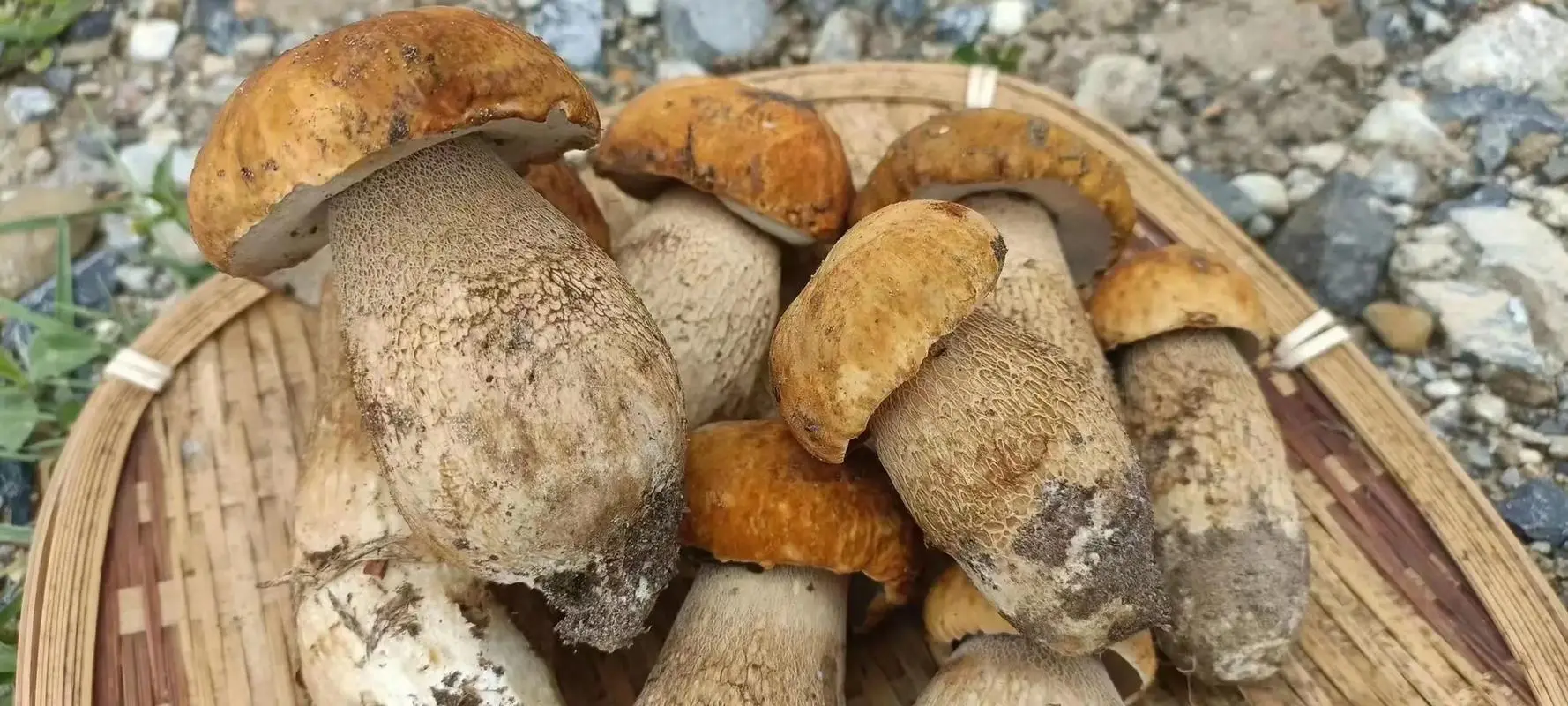
Boletus
Boletus mushrooms are a precious edible mushroom that is loved by people because of its fatty meat and delicious taste. There are many kinds of porcini mushrooms, including white porcini mushrooms, yellow porcini mushrooms, black porcini mushrooms, etc., which are not only delicious, but also have rich nutritional value and certain medicinal value.
Rich in protein, carbohydrates, vitamins, and minerals such as calcium, phosphorus, iron, etc. They contain a complete range of amino acids and are high in content, which has high nutritional value. In addition, porcini also contains a variety of bioactive components such as polysaccharides, flavonoids, polyphenols, steroids and terpenoids, which have health care functions.
Directions:
Stir-frying: Porcini mushrooms can be stir-fried with sliced meat, vegetables, etc., such as stir-fried porcini mushrooms with garlic slices.
Soup: Boletus mushrooms can be used in soups and paired with other ingredients such as chicken, pork ribs, etc., to enhance the umami flavor of soups.
Grilling: Porcini mushrooms are also suitable for grilling, and can be grilled directly over the fire until ripe, retaining their original flavor.
Cold salad: Fresh porcini mushrooms can be blanched and then served cold, add seasonings and mix well.
Hot pot: Porcini mushrooms are also a common ingredient in hot pot and can be eaten shabu-shabu.
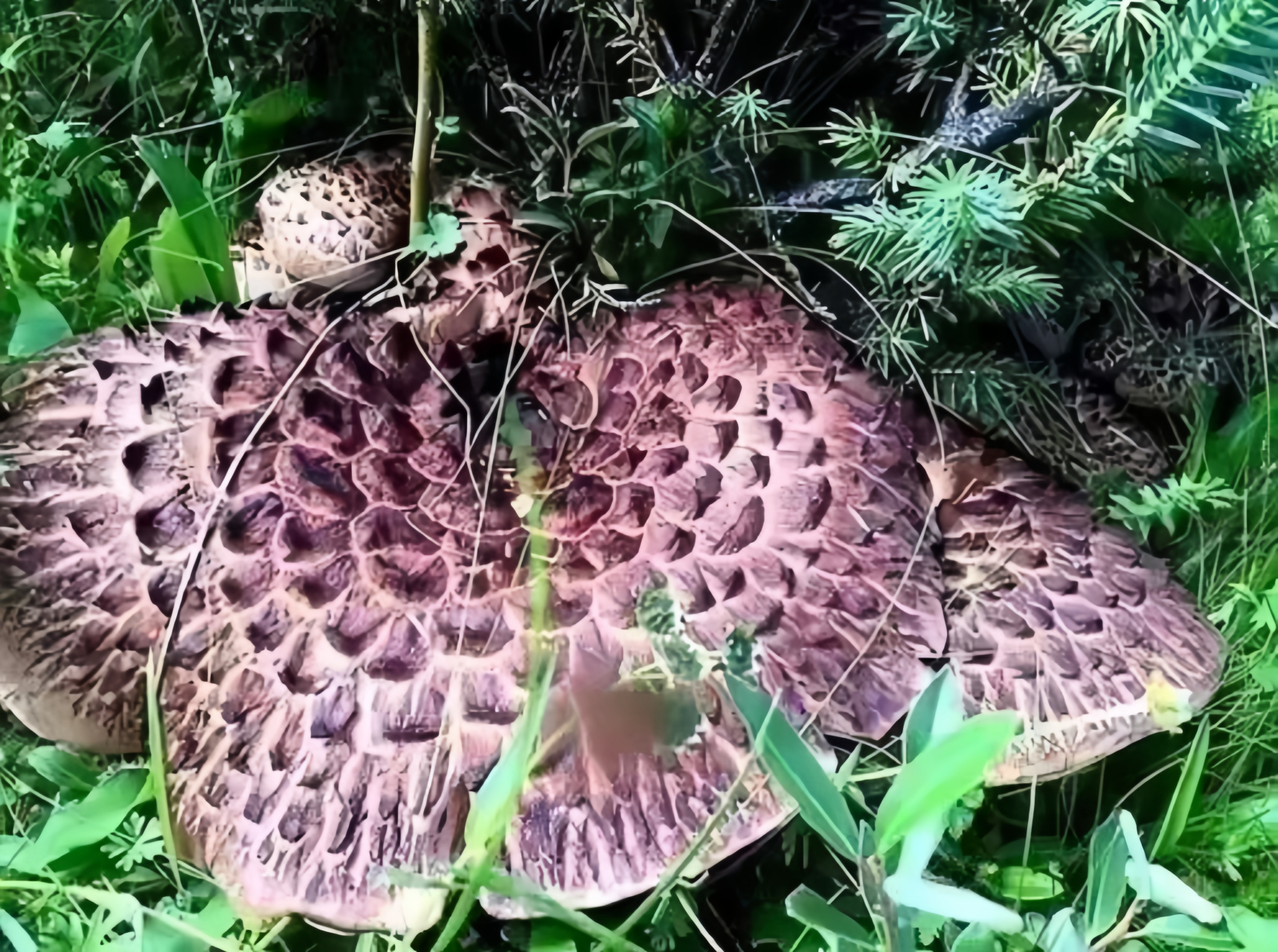
Tiger palm fungus
Tiger palm mushroom is a rare and valuable wild edible mushroom, named after its shape similar to the tiger’s paw, which is delicious and nutritious. Tiger palm mushroom is rich in protein, amino acids, vitamins and minerals, which have the effects of enhancing immunity, tonifying the kidney and strengthening yang, and beautifying the skin. Tiger palm mushrooms can be eaten by the general population, especially suitable for people with weak constitution and low immunity.
Dried tiger palm mushrooms need to be soaked before use, and generally soaked in warm water at about 40 degrees for about 20 minutes to soften them. There may be sediment on the surface of the tiger palm fungus, which needs to be thoroughly cleaned to avoid affecting the taste and hygiene. Tiger palm mushrooms should be stored in a dry, ventilated, and dark environment to avoid mildew caused by moisture.
Directions:
Soup: Tiger palm mushrooms are suitable for making soups with meat, such as chicken, pork, etc., which can increase the umami and nutritional value of soups.
Stir-fry: Tiger palm mushrooms can be quickly stir-fried with shredded pork, chili peppers and other ingredients to make delicious stir-fried dishes.
Stewed meat: Stew tiger palm mushrooms with meat, such as tiger palm mushroom roast meat, the meat is delicious and the mushroom aroma is strong.
Cold salad: Tiger palm mushrooms can also be cooked and served cold, with seasonings added to make a refreshing cold dish.
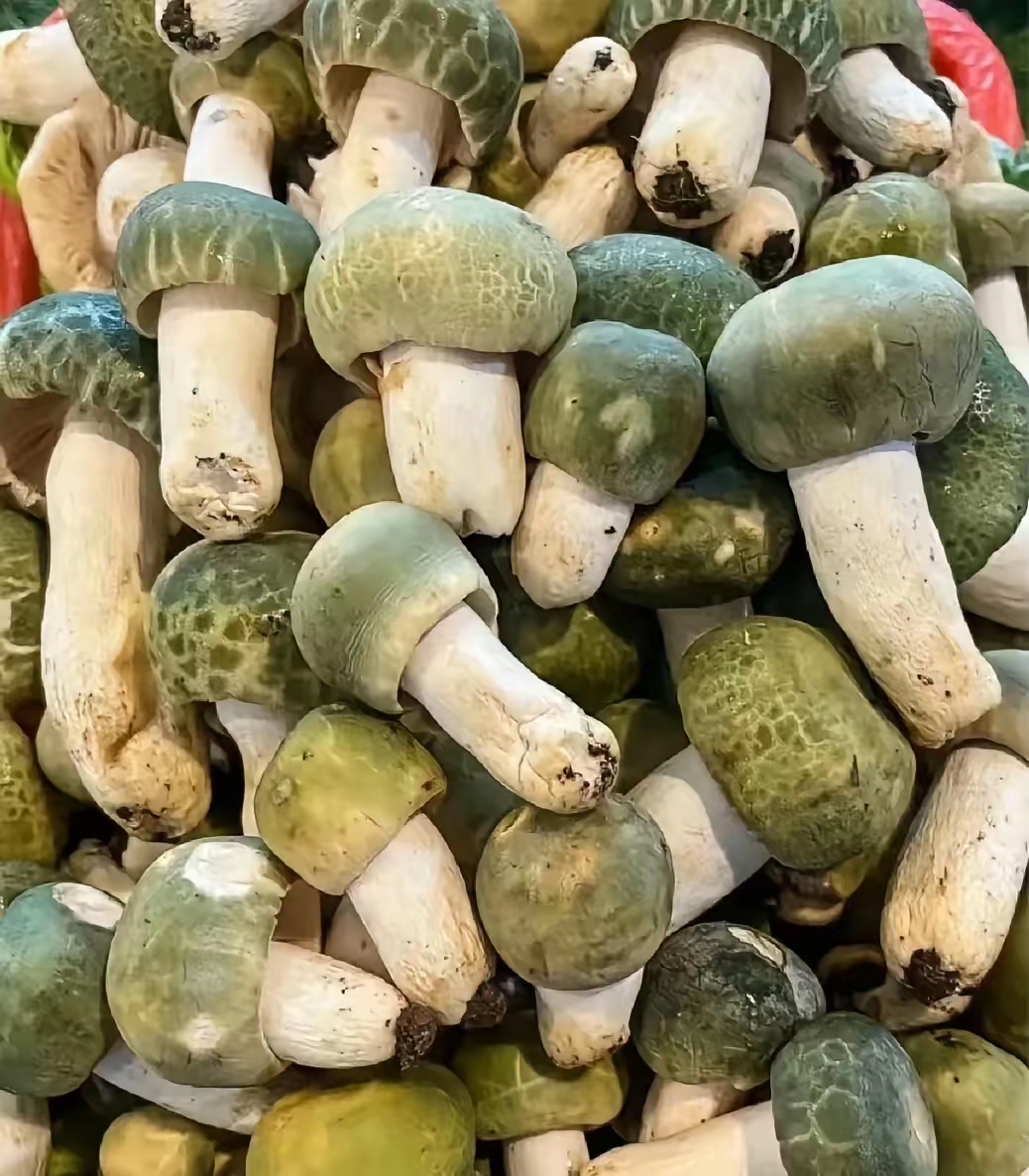
Cyancephalic mushrooms
Cyancephalus is a precious edible fungus, which is mainly produced in the primeval forest area of the “Three Parallel Rivers” area in western Yunnan, especially after the rains in summer and autumn. The mushroom is delicious, the meat is delicate, rich in protein, amino acids, plant fiber and other nutrients, and has a variety of beneficial effects on the human body.
Fresh blue-headed mushrooms can be dried and stored, or fried and sealed. Short-term storage can be stored in a cool, dry place, while long-term storage needs to be dried and refrigerated or frozen.
Directions:
Stew: Greenhead mushrooms can be stewed with meat, chicken, pork ribs, etc., to increase the umami flavor of the soup.
Stir-fry: Slice or dice the green head mushrooms and stir-fry them quickly with garlic slices, green peppers, etc.
Braised mushrooms: Braised with pork slices, chili peppers, garlic slices and other seasonings, the flavor is unique.
Cold dressing: Blanched green-headed mushrooms can be eaten cold, and seasonings are added to increase the flavor.
Cyancephalic mushrooms are not only delicious, but also have high nutritional value and medicinal value, making them a rare ingredient. When cooking, care should be taken not to cook at high temperatures for long periods of time, so as not to destroy its nutrients and taste.
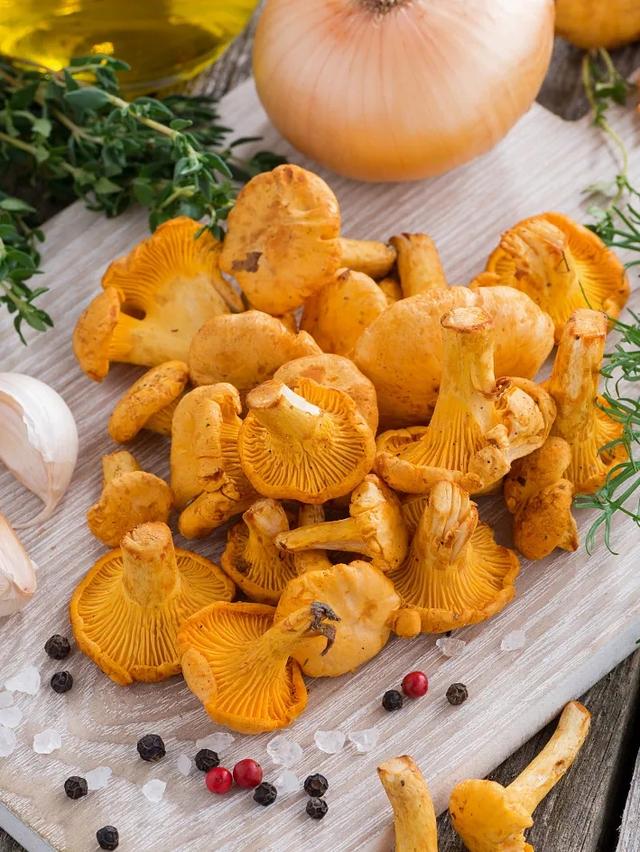
Chanterelles
Chanterelles are a well-known edible mushroom named for their resemblance to chicken fat in color and taste, with a delicate taste and rich aroma. Fresh chanterelles can be refrigerated in the refrigerator after washing, usually for 1-3 days. Blanching chanterelles and freezing them can be stored for a longer period of time, but may affect the taste. Dried chanterelles are stored in a dry, ventilated, and dark environment and can be stored for a long time.
When cleaning chanterelles, sediment and impurities should be removed, and the surface can be gently scrubbed with your hands. Before cooking, blanching of fresh chanterelles is recommended to remove impurities and possible microorganisms. Dried chanterelles need to be soaked before use, and the original soup can be used for cooking to preserve flavor and nutrients.
Directions:
Stir-fry: Fresh chanterelles can be quickly stir-fried with garlic slices, green peppers, etc., to maintain their original flavor.
Soup: Chanterelles are suitable for soup with chicken or other meats, and their delicious flavor can be incorporated into the soup to enhance the flavor of the soup.
Stew: Chicken oilage mushrooms are stewed with pork or beef, and the meat is delicious and fragrant.
Hot Pot: Eat chanterelles in a hot pot to experience its unique taste and flavor.
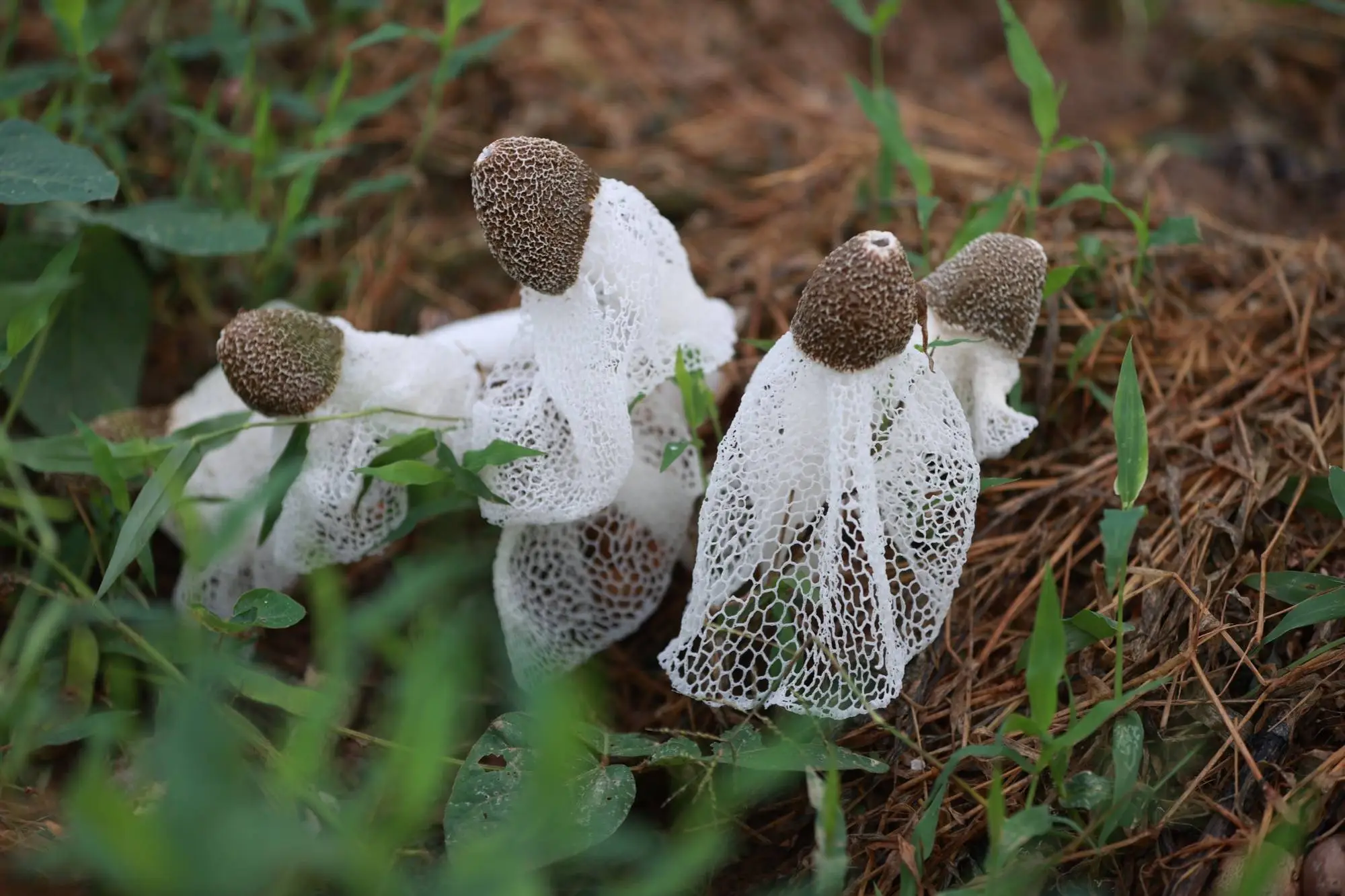
Dictyophora
Bamboo sunflower is a precious edible mushroom that is loved by people for its delicious taste and high nutritional value. Bamboo sunflower is rich in protein, including a variety of essential amino acids, and is a high-quality source of plant protein. Bamboo sunflower contains a variety of vitamins (such as B vitamins) and minerals (such as potassium, phosphorus, iron, zinc, selenium, etc.) that help maintain good health. The dietary fiber contained in Bamboo Sunflower helps to promote intestinal health and prevent constipation. Bamboo sunflower is low in fat and is suitable as a food for weight loss and blood lipid control. The antioxidants in Bamboo Sunflower help to scavenge free radicals in the body and delay aging.
Dried bamboo thorns need to be soaked in lightly salted water first, and the soaking time is generally 30 minutes to 1 hour. After soaking, the bamboo sunflower should be thoroughly washed to remove impurities. Fresh Bamboo Sunflower can be stored in the refrigerator for about a week, and dried Bamboo Sunflower should be stored in a cool and dry place and consumed as soon as possible after opening. Bamboo sunflower is cold, and people with spleen and stomach deficiency or diarrhea should not eat more.
Directions:
Bamboo sunflower clear soup: Wash the bamboo sunflower after soaking, put it in clean water and cook it, add an appropriate amount of salt to taste, simple and light.
Bamboo fungus soup: Soak the bamboo fungus and white fungus together, wash it and cook the soup, you can add rock sugar, which has the effect of moisturizing the lungs and nourishing the skin.
Bamboo Ribs Soup: Simmer the bamboo ribs and pork ribs together, add an appropriate amount of seasoning, and stew until the ribs are cooked through, and the soup is delicious.
Stuffed meat with bamboo sun: After soaking the bamboo sun, the meat filling is stuffed into the bamboo sunflower and steamed and eaten.

Leave a Reply